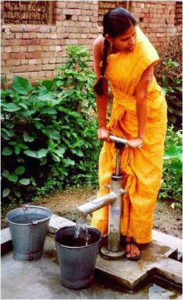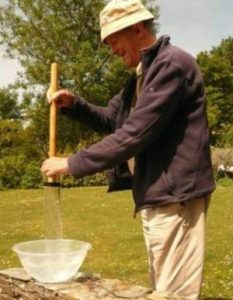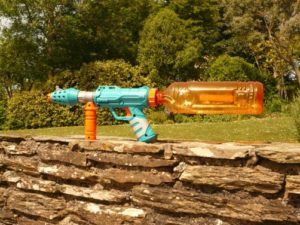Profile
Ken Gibbs
He who refuses to do arithmetic is doomed to talk nonsense
Curriculum Vitae
-
Work History:
General civil engineering in S Africa; UK; Iran (1968-78); then water and sanitation with WHO and UNICEF (Google them if you are not sure who they are) in Asia and Africa (1979-1996); then as a disaster relief specialist in many places in Europe, Asia and Africa (1996-2010)
-
Current Job:
I am now a volunteer Science and Engineering Ambassador (for STEMNET) in Cornwall and Devon
-
Employer:
I am retired but my last employers have included UNICEF, OXFAM, the US and UK Governments, ADB, UNRWA, MSF and Columbia University/Sorros Institute.
-
My Work
Providing water and sanitation to poorer communities for their health, particularly for smaller children.
-
Read more
We created a handpump in Bangladesh to fill an urgent need, which is now used in many different countries around the world, providing water to between 150 and 200 million people. It’s called the Tara and here is an example:
We helped change attitudes to latrines in Bangladesh. I was asked to work for UNICEF in Pakistan as a troubleshooter in Quetta (1985) and ended by writing a book about how to plan, design and make successful piped water supplies for desert communities which was adopted by the World Bank. How the system was explained:
I worked briefly in Viet Nam and Bhutan. Was made to learn to speak Portuguese so I could work in Mozambique to help with the demobilization process after their civil war. Took early retirement from UNICEF to concentrate on disaster relief which took me to many different countries working after floods, cyclones, war and earthquakes. Here’s the result of conflict in Palestine in 2002:
and how a small part of the 15 million tonnes of rubble which was dumped outside the city looked after the Bam earthquake in Iran at the end of 2003:
Now, most of the work I do is for STEM in schools in Cornwall (and a bit of Devon) where I don’t have to travel too far. I also help young engineers who want to do the sort of things I have done, by talking to them by Skype or on e-mail.
-
My Typical Day: I don’t seem ever to have had a “typical day”
-
Read more
Looking just at the start of a “typical day” in disaster relief: Because I was often in charge of water and sanitation after a disaster, a “typical day” would include one meeting of all water and sanitation staff (never for more than an hour) where we would look at what was needed most urgently; who could provide it; how they would do it; who would help them; and by when that work would be finished. It would also make sure that everyone would know exactly for which part of the affected area they were responsible and what the conditions were in all parts of their own areas. Very precise mapping of the affected area is now commonplace, which is updated daily or weekly depending on the conditions, and this very often showed up areas of particular need. An example of a map of the Pakistani floods in 2010 shows worst affected areas in red:
All these meetings and activities include the concerned government staff because they will have to take over when the disaster relief specialists have gone.
-
What I'd do with the money
I would ask the “Design and Making Centre for Cornwall” to help make three or four devices to demonstrate how water behaves, for STEM Ambassadors in Cornwall to use in the classroom
-
Read more
The devices will be made so pupils can see exactly what is going on inside them, by using acrylic (see-through) pipes, blocks and different coloured plastic sheets for the simple valves. The first one is a simplified handpump – I have already made one and use it but it is rather crude as I cannot afford better as may be seen in this photo:
The second will demonstrate a siphon which can work in two directions; the third will demonstrate a water gun (I bought one which causes a riot every time I bring it out, but the pupils can’t see inside it so they may not fully understand how it works, and that it is the same as a handpump); check this photo:
and I haven’t yet decided on the fourth device except that it might be a simple jet on which I can balance a ping-pong ball to demonstrate surface tension if there is enough money left over. I’m still thinking. . . .any suggestions ?
-
My Interview
-
How would you describe yourself in 3 words?
Curious, adventurous, teacher
What's the best thing you've done in your career?
Created a handpump which can be entirely looked after by women, and which today may provide water to as many as 150 to 200 million people
What did you want to be after you left school?
I didn’t know. Certainly, I didn’t see myself doing anything “sciency”, but I liked fixing things that had gone wrong, so imagined being something that required using my hands. I particularly liked things that went off with a big bang – the louder, the better, but the military didn’t appeal to me.
Were you ever in trouble at school?
Yes, when I was caught with cigarettes, and those were the days when you were caned six-of-the-best for this misdemeanour. I became VERY much more careful as a result !
Who is your favourite singer or band?
Samantha Stevenson in “Wherever you are”. She has one of the purest voices I have ever heard.
What is the most fun thing you've done?
Difficult to chose between: Working with a man who later became a Nobel Peace Prize winner; meeting Hezara people in Afghanistan; being posted to Bhutan for six months; watching fabulous sunsets; walking on the wild side in Albania; or seeing baby wart-hogs playing in Namibia.
Tell us a joke.
“Waiter! This coffee tastes like mud.” “Yes sir, it’s fresh ground.”
-







